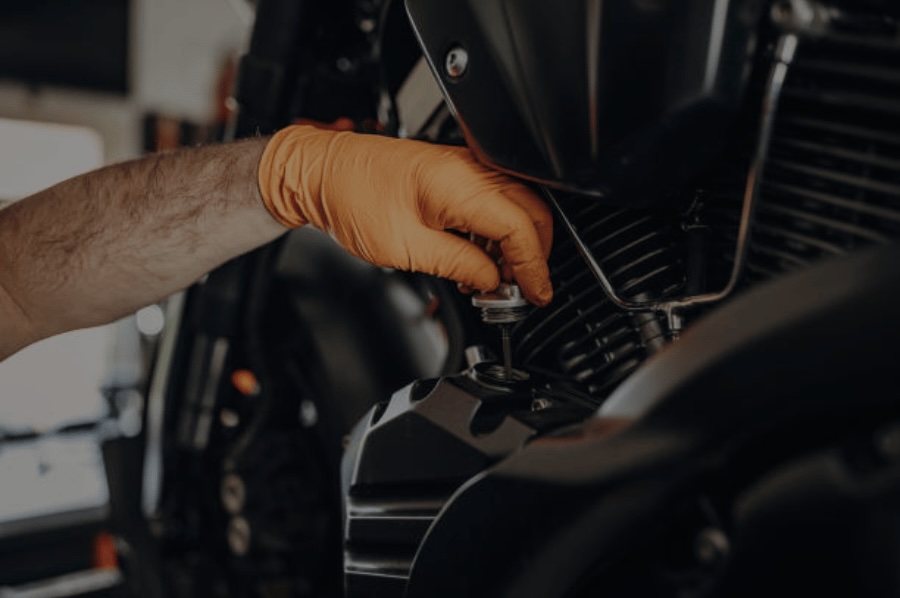
Oil Change
Oil is the life blood of your engine. It courses through your engines veins as you cruise down the road, and it is one of the most important factors in prolonging engine life. Oil performs five main functions for your engine; lubrication, cooling, cleaning, corrosion protection, and sealing. Before changing your bikes engine oil you should always take it out for a spin first and bring your engine up to operating temperature. There are a couple reasons for this. First you want to make sure to stir up any sediment or particulates that might have settled to the bottom so that you can drain them out and second your oil will flow more easily when its warm which will reduce the time it takes you to change the oil and help get more of the old oil out of your engine. Be careful when removing the drain plug though as your engine oil will be hot and could potentially burn you.
If your oil plug has a magnet on the end make sure to inspect any particles that may be attached. A few tiny particles is normal, but large buildup may indicate excessive engine wear or an oil filter that’s not functioning properly.
After removing your oil filter it is a good idea to inspect what it has filtered out of your oil. If you have a high performance re-usable filter such as a K&P this is easy, if you have a disposable paper filter you can cut it apart and inspect its contents. This is just one more way to "read" what is happening in the engine. By checking the particles that get caught in the filter you can identify abnormal wear and prevent catastrophic engine failure, potentially saving you thousands. It is way better to replace a rod bearing that's starting to go, than to be standing next to your bike looking at that same rod sticking out the side of the engine!
Before installing your new oil filter make sure to apply a thin film of oil to the gasket. This will reduce the chance of tearing the gasket during installation and make it easier to remove for your next oil change. It is a good idea to pour a few ounces of fresh oil into your filter as well, this way your engine won’t have to wait to get oil to your valve lifters, pushrods and top end while your filter is filling with oil.
After you’ve finished changing your oil start your engine and let it run for a few minutes so that the fresh oil can circulate through your entire engine. Check around the oil filter and plug to make sure there are no leaks. After you’re sure there are no leaks turn your engine off and check the oil level. When checking the oil level your bike should be standing upright, having your buddy come sit on the bike is always a good option. If you leave your bike on the side stand you won’t get an accurate reading as the oil will flow to one side. Also when checking the oil level make sure to remove the dipstick, wipe it clean, re-insert it, and then remove it one more time to get the best reading.
Whenever you change your oil it’s very important to read and follow your owner’s manual. A simple error such as removing the wrong plug can result in too much oil ending up in the engine and none in the transmission, which can clog the engines breather system and possible destroying your transmission.
|